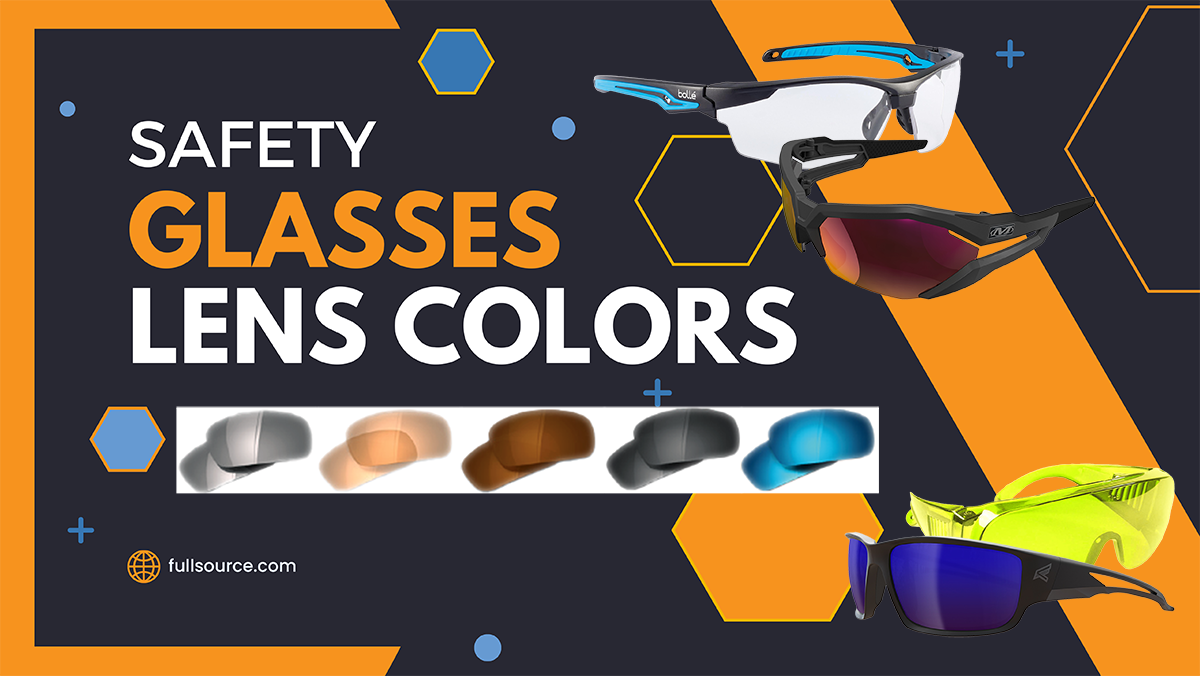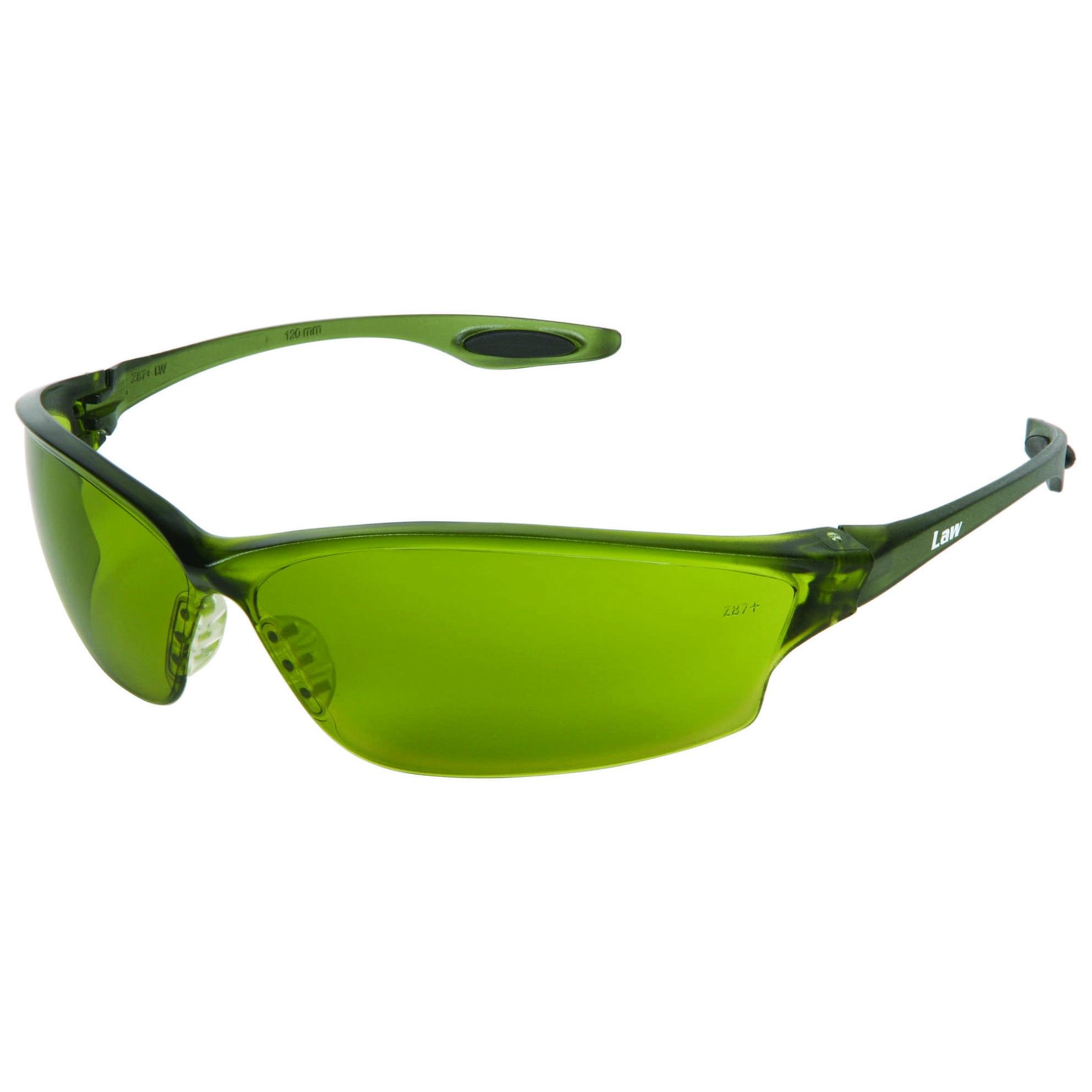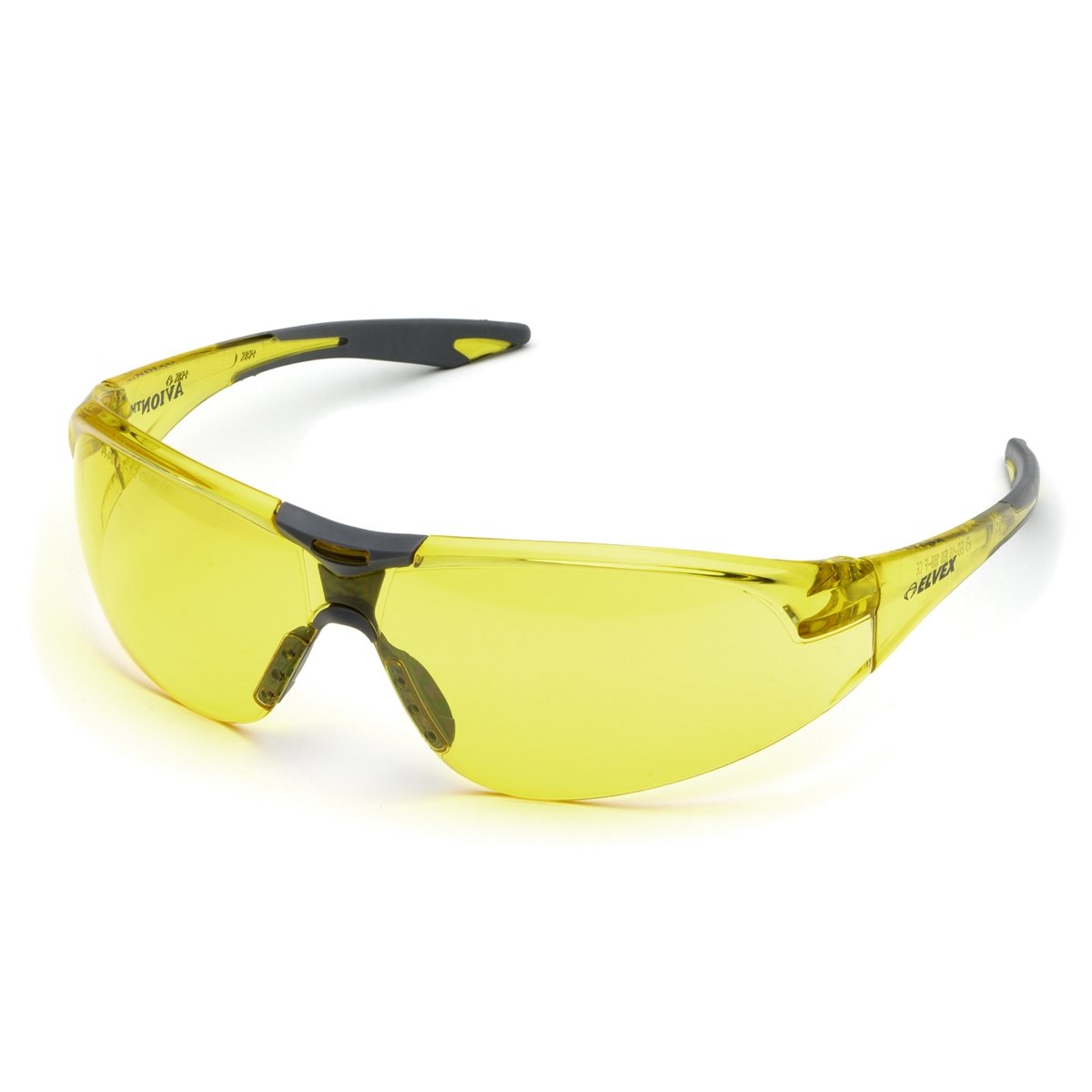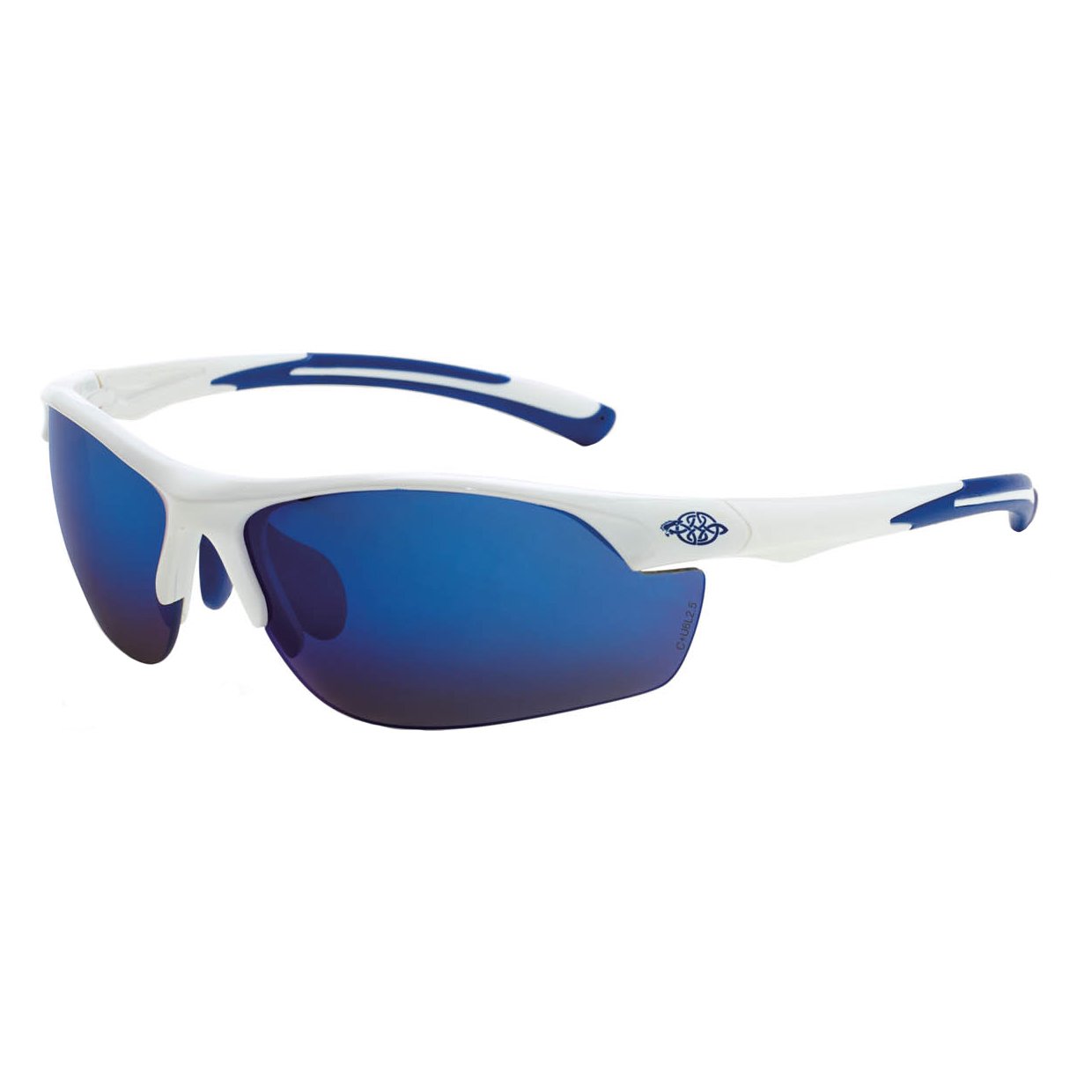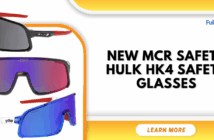Overwhelmed by all the safety glasses lens colors available? Are you tired of wearing the same old clear safety glasses on every job site? Do you ever wonder if there’s a reason why some safety glasses have different colored lenses? Well, wonder no more! In this blog post, we’ll break down what each safety glasses lens color means and help you choose the perfect pair for your next project. Whether it’s yellow, blue, or green – Full Source has you covered. So let’s get started and find out what those colorful lenses are all about.
Introduction to Safety Glasses Lens Colors
First of all, there are a variety of safety glass lens colors available on the market today. And they are from best-selling safety glasses brands like MCR Safety, Bouton, Elvex and Radians. There are styles for men and women. And most safety glasses colors meet ANSI Z87.1 safety standards for the job site. Each color has its own benefits and drawbacks, so it’s important to choose the right lens color for your specific needs.
Popular safety glasses lens colors:
Gray: Gray lenses are great for general use and provide good all-around protection from UV rays and glare. However, they don’t offer much in the way of contrast enhancement, so they may not be ideal for use in low-light conditions.
Amber: Amber lenses are perfect for use in low-light conditions as they help to increase contrast and make objects appear more vivid. However, they can cause some color distortion and should not be used in very bright light as they will make everything appear too dark. And some amber lens safety glasses like the Pyramex S4130S Intruder, meet high-velocity ANSI safety standards.
Clear: Clear lenses offer the best possible visibility and are ideal for use in both bright and low-light conditions. They are one of the most popular and economical colors. And most 100% polycarbonate clear color lenses will block 99% of harmful UV rays without restricting your vision.
Smoke: Smoke lenses provide good all-around protection from UV rays and glare while still allowing good visibility. They are perfect for use in both bright and low-light conditions. However, like clear lenses, they offer no protection from UV rays or glare when used alone in sunny conditions.
Clear Lenses
Most of all, different lens colors can offer different advantages for safety glasses wearers. And clear lenses, for example, are ideal for indoor use or when maximum visibility is necessary. Darker lenses, on the other hand, can be beneficial in outdoor applications or when working in particularly bright conditions. Below, we’ll take a closer look at the benefits of each type of lens color.
Clear Lenses:
And as mentioned, clear lenses are ideal for indoor use or when maximum visibility is necessary. If you’re working in a low-light environment or need to be able to see as much as possible, clear lenses are the way to go. And clear lenses don’t distort colors like some of the other options on this list, so they’re a good choice if you need to be able to identify objects by their true colors.
Dark Lenses:
Dark lenses are perfect for outdoor use or when working in very bright conditions. They help reduce glare and protect your eyes from harmful UV rays. If you’ll be spending extended periods of time in direct sunlight, dark lenses are a must.
Shades of Gray
Most people are familiar with the standard clear lens on safety glasses, but did you know that there are different lens colors available? And each color has its own benefits and is best suited for specific tasks. Here is a breakdown of the most common lens colors:
Smoke/Gray Lens: Gray lenses, also referred to as smoke color, are great for general use and provide good protection from both UV rays and bright light. They also have excellent clarity and contrast, making them a good choice for activities like driving or working outdoors.
Amber Lens: Amber lenses are ideal for low-light conditions or when you need maximum contrast. They can help improve your vision in foggy or overcast conditions, and they’re also great for night-time uses like hunting or camping.
Yellow Lens: Yellow lenses are another good option for low-light conditions. And they can help reduce glare and improve your depth perception. Yellow lenses are often used by athletes for sports like tennis or skiing.
Orange Lens: Orange lenses are perfect for medium to high-light conditions. They enhance contrast and depth perception, making them ideal for activities like golfing or hiking. And orange lenses can also help block out blue light, which can be helpful if you’re trying to avoid screen fatigue.
Yellow and Orange Lens Colors
There are a few different types of lens colors available for safety glasses. Yellow and orange are two popular options for low light and cloudy conditions. And they help enhance contrast. Both of these colors have their own unique benefits that can help you stay safe while working.
Yellow lenses are great for reducing glare. They can also help improve your vision in low-light conditions. Orange lenses are perfect for outdoor use. They can help reduce eye fatigue and provide better contrast in bright sunlight.
Blue and Green Lenses
In addition, some popular safety glasses come with either blue or green lens options. But what’s the difference between the two?
Blue lenses are designed to reduce glare, while green lenses improve contrast. If you’re working in an environment with lots of bright lights, blue lenses are a good option. They’ll help you see better by reducing the amount of glare.
Green lenses are a good choice if you need to improve your contrast vision. This can be helpful when you’re working with small objects or in low-light conditions. And green lenses will make it easier to see the details of what you’re working on. Green lens safety glasses are also used for welding eye protection. And most welding-safe green lens safety glasses have IR filter lenses that block UV rays and flash burns. They also offer impact protection from flying objects associated with cutting, brazing, and torch soldering.
Both blue and green lenses can provide UV protection from the sun. So, if you’re looking for sunglasses to wear outside, either color lens will work. Just make sure to choose a pair that has 100% UV protection.
Brown, Purple & Pink Lens Colors
There are several reasons why someone might choose to wear brown, purple, or pink lenses while working. These lens colors can offer different benefits depending on the specific shade and the lighting conditions in the work environment.
For example, brown lenses can help reduce eye fatigue by blocking blue light waves. Purple lenses are often used in medium to low-light conditions because they can improve contrast and help prevent glare. Pink lenses may be worn for cosmetic reasons, but they can also help filter out blue light. And they allow 11% light transmission, maximizing light filtration.
Choosing the right lens color for your needs can make a big difference in your comfort and safety while working. If you’re not sure which color is right for you, ask a safety professional or try out different options to see what works best in your particular situation.
Polarized Lenses
Polarized lenses are a type of lens that helps reduce glare from surfaces like water, snow, and glass. They are often used in outdoor activities like fishing and skiing. And polarized lens coatings are available on several different lens colors from brands like CrossFire, Bullhead, and Edge.
Conclusion
Different lens colors on safety glasses can make a big difference in your job. Whether you are welding, cutting metal, or working outdoors, the color of your safety lenses can help protect you from hazardous conditions and the sun’s glare. With so many choices available, it’s important to understand what each lens color means and how they can be used to protect yourself while on the job. Be sure to choose the right pair of safety glasses for every task at hand – your eyes will thank you!

